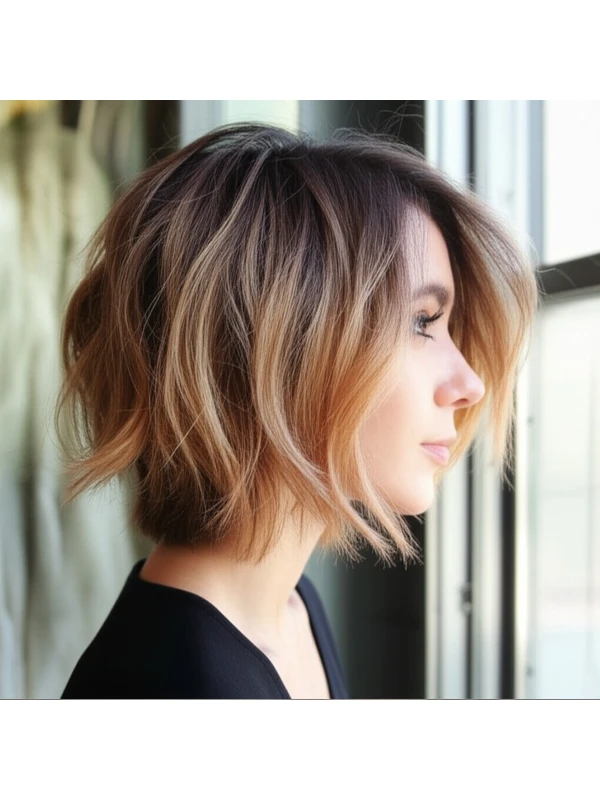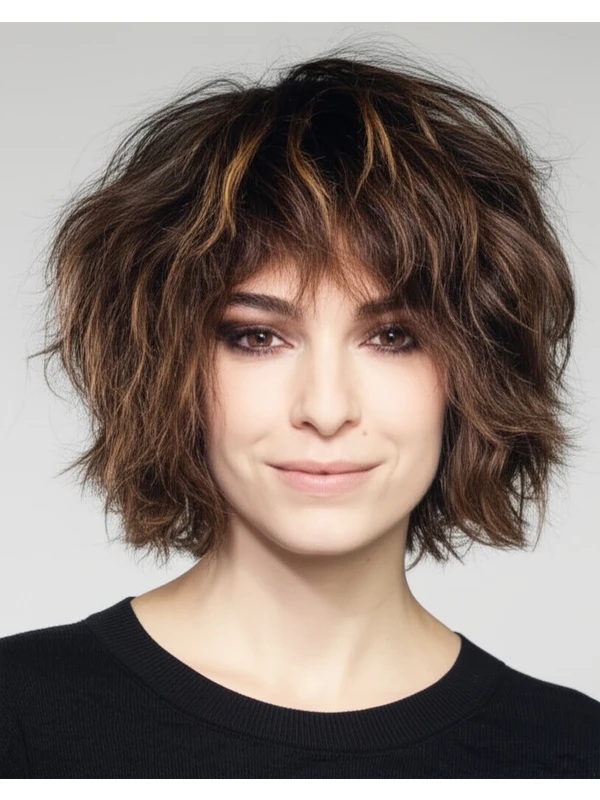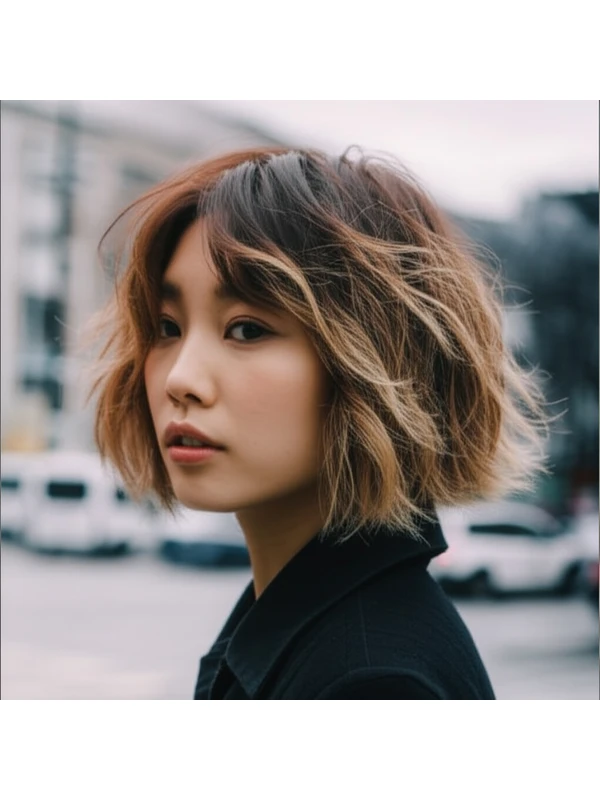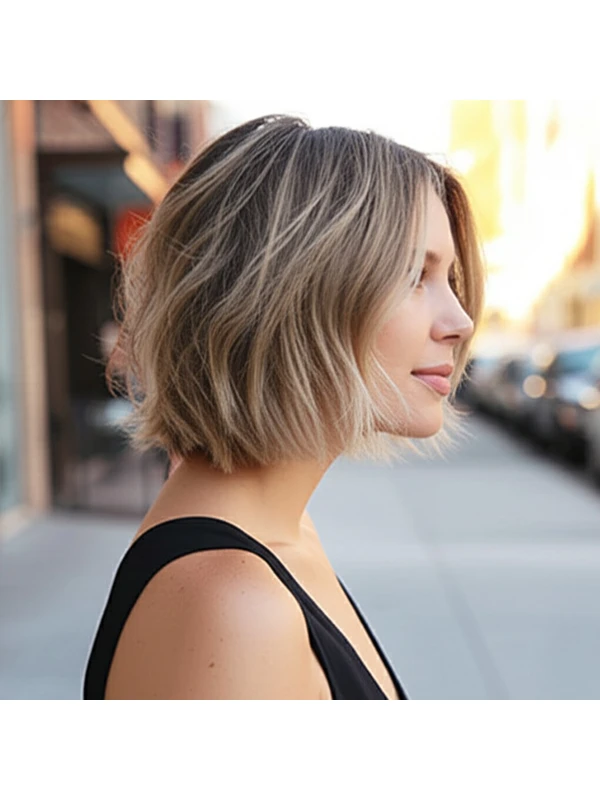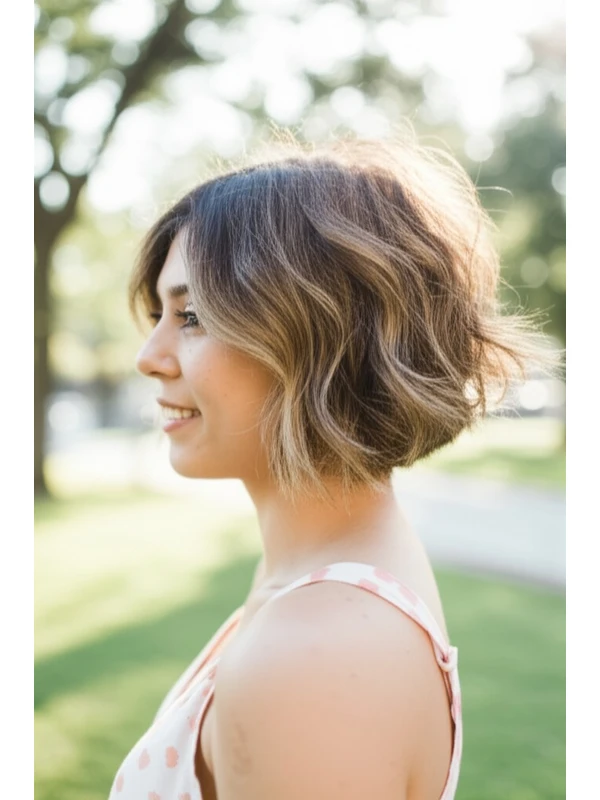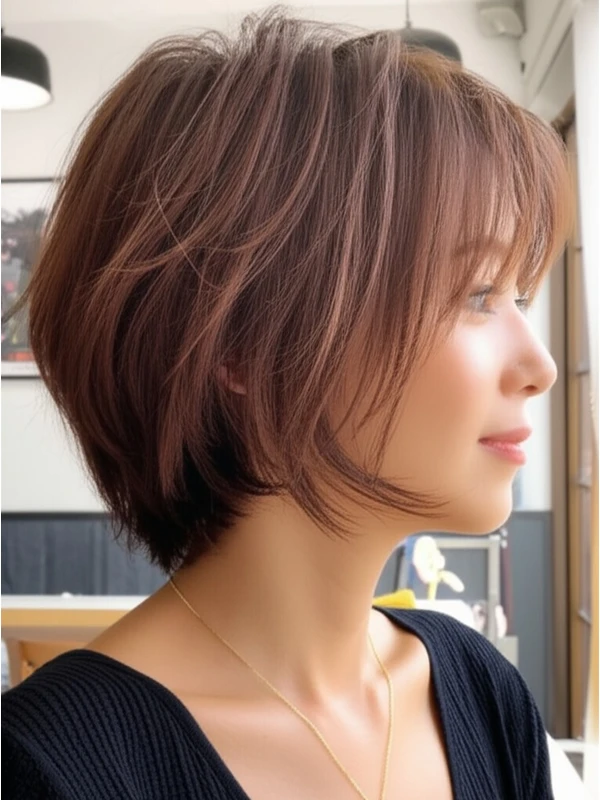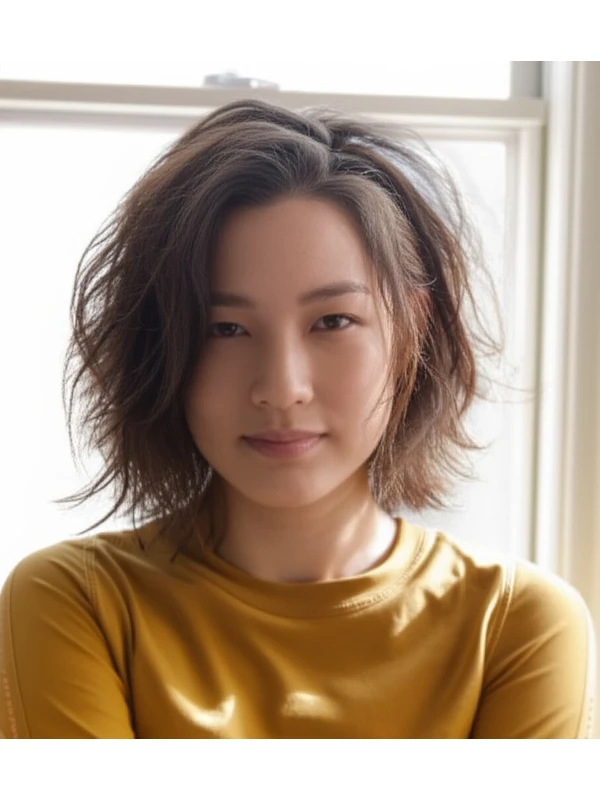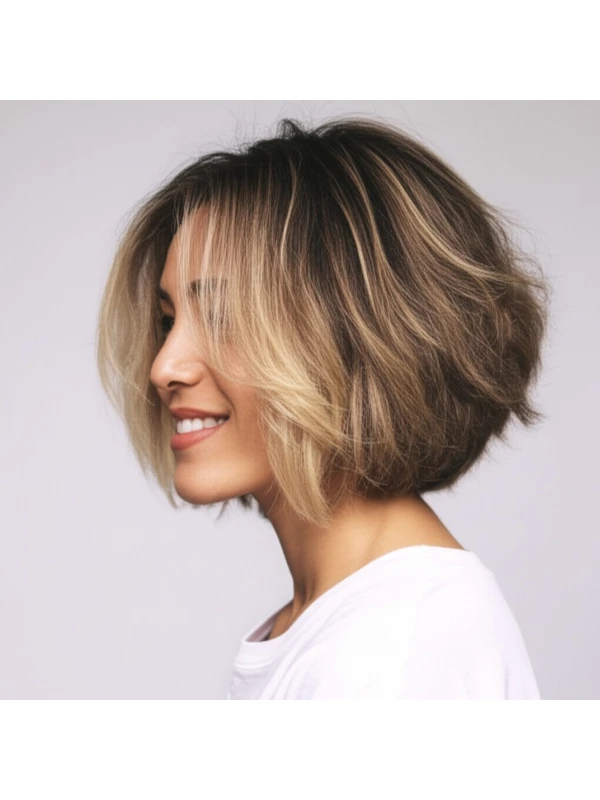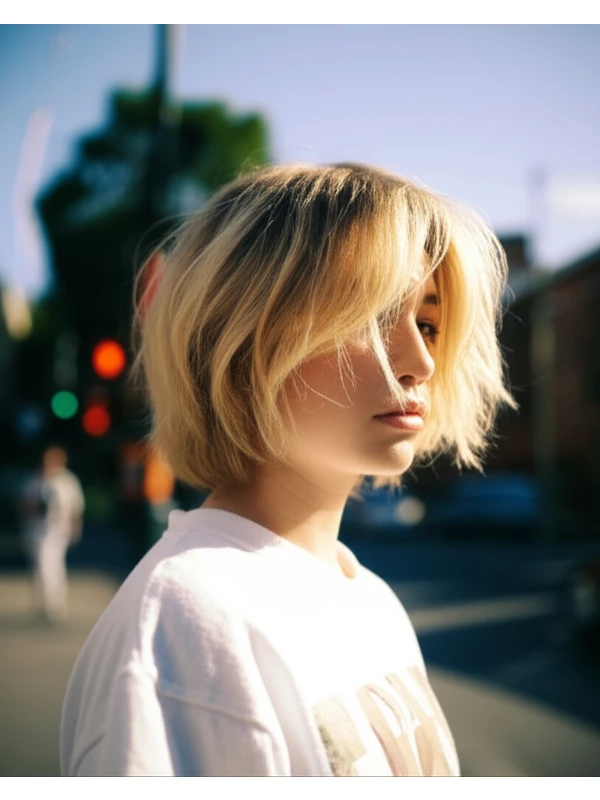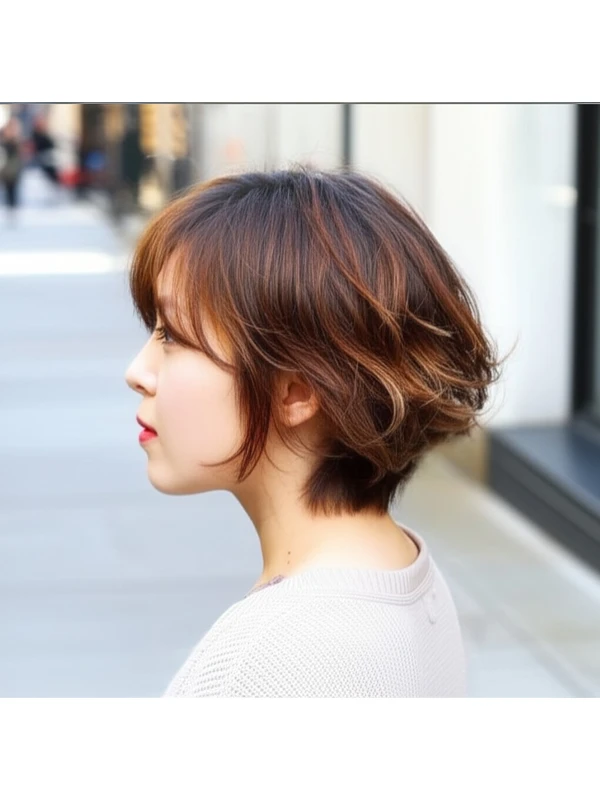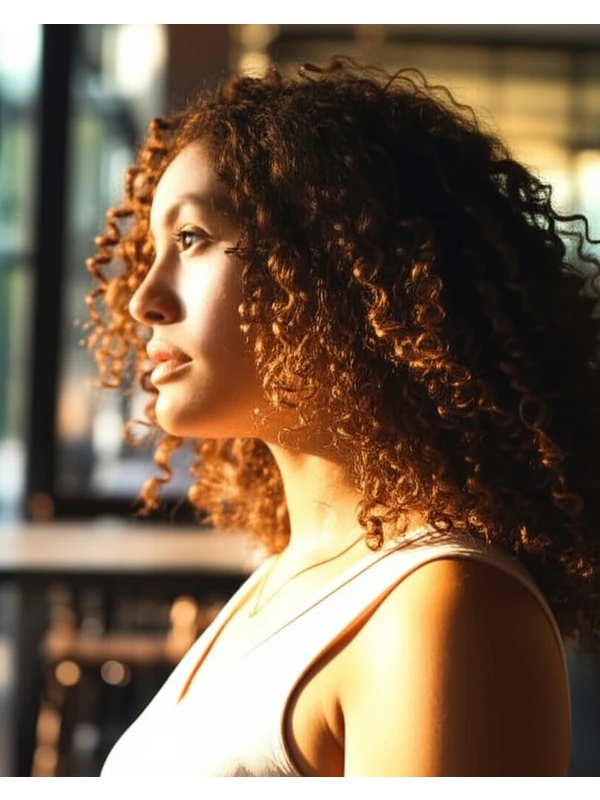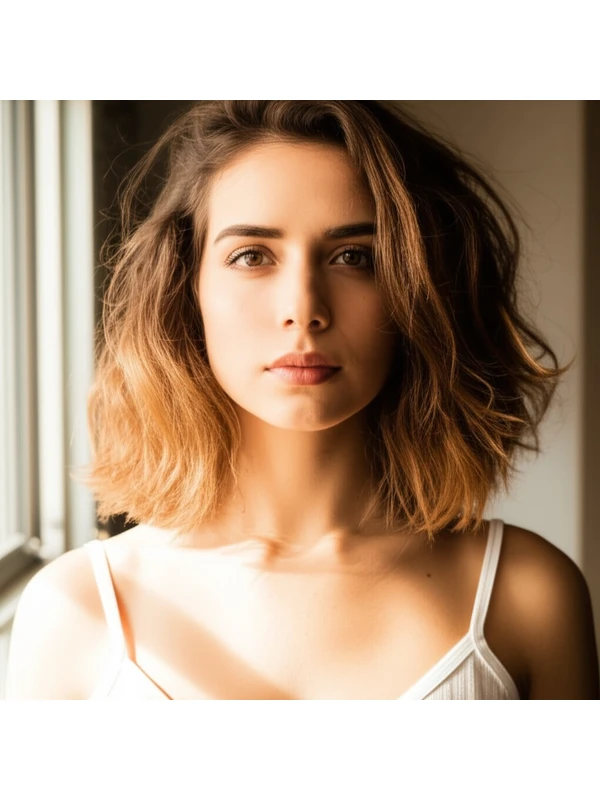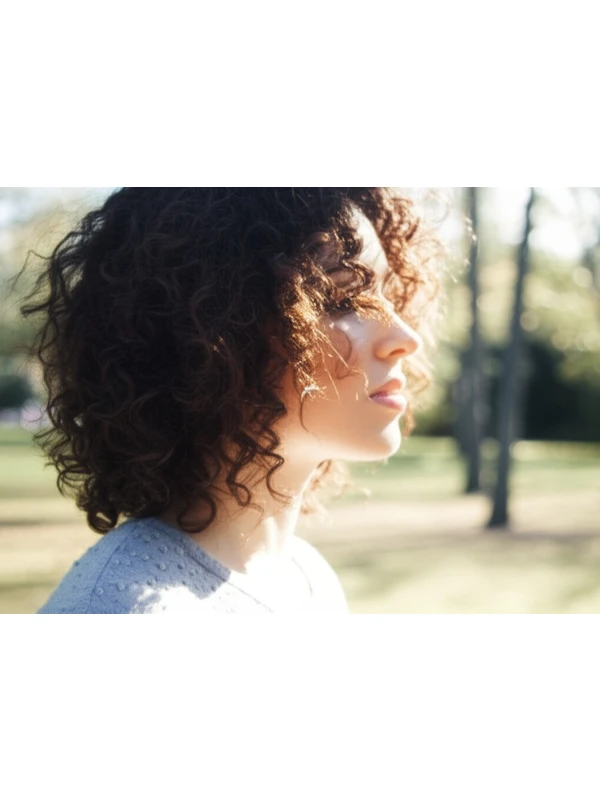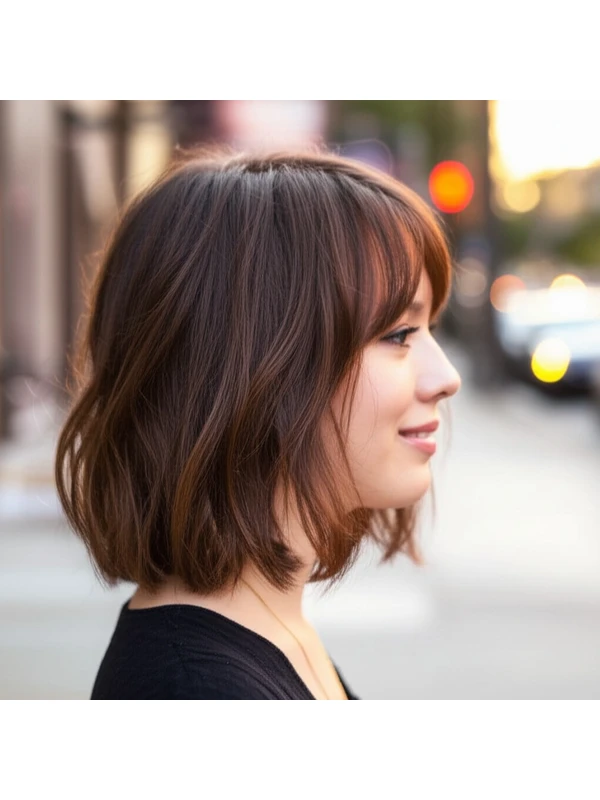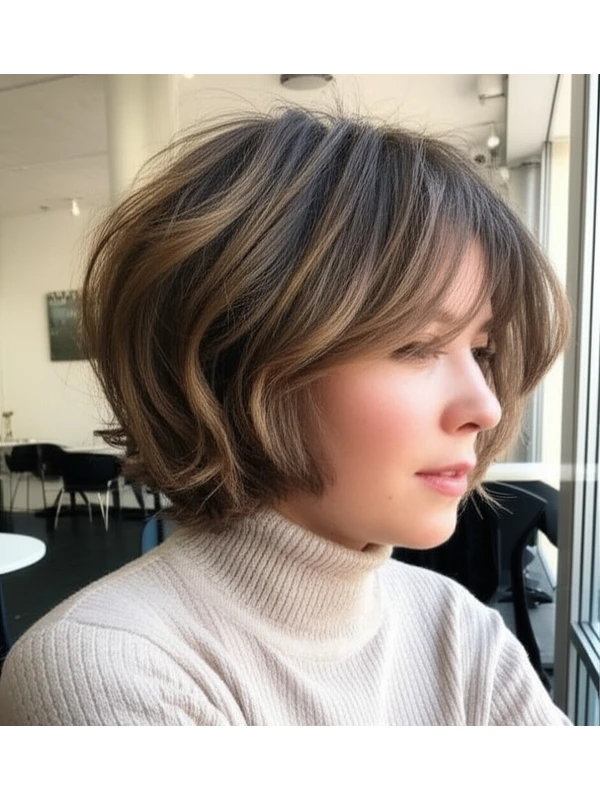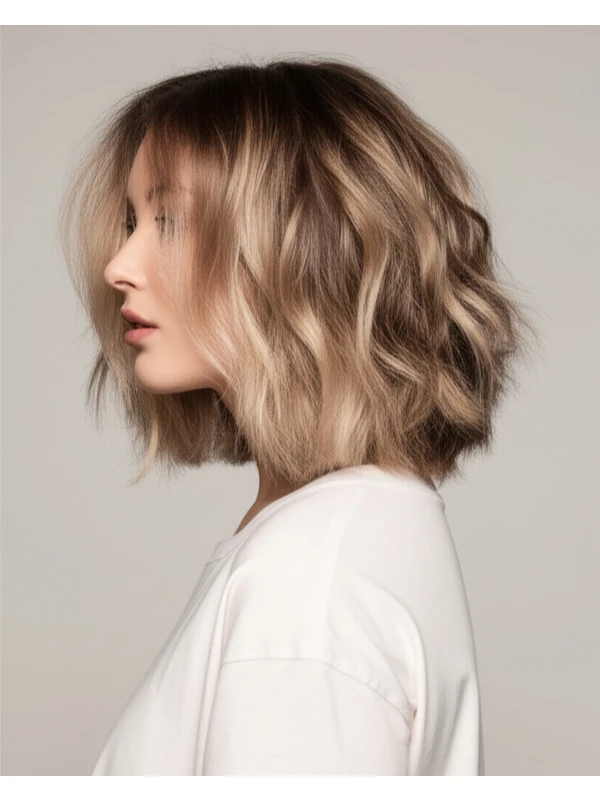#Razored Layers: A Guide to Movement & Dimension
Razored layers are a popular hairstyle choice for good reason – they add movement, texture, and dimension! But is this cut right for you? This guide breaks down everything you need to know about razored layers, from face shape compatibility to styling tips. Let’s dive in!
#1) Background & Definition: What Are Razored Layers?
Razoring isn't just cutting hair; it's a technique. Instead of traditional blunt cuts, the stylist uses point-cutting (or razor cutting – though this is less common now due to potential damage concerns) at the ends of layers. This creates a softer, more feathered edge that looks pieced together and allows for incredible movement.
Key Features:
- Textured Ends: The defining characteristic! Razoring removes weight from the ends, creating a wispy, textured look.
- Increased Movement: Layers naturally add volume and bounce. Razoring amplifies this effect.
- Soft Transitions: The point-cutting technique blends layers seamlessly for a less harsh appearance.
Typical Length Ranges: Razored layers can work on virtually any length – from short bobs to long, flowing manes. However, they truly shine on medium to long hair (shoulder-length and beyond) where the movement is most noticeable.
Alternative Names: You might hear this style referred to as "textured layers," “pieced-out layers,” or simply “layered cuts” – but be sure to specify you want razored ends for that signature texture.
#2) Face Shape Fit: Finding Your Best Angle
The right layer placement can enhance your best features and balance out facial proportions. Here's a breakdown by face shape:
- Oval: Lucky you! Oval faces are generally flattering with almost any layered style. Razored layers will add even more softness and movement. Fringe: A curtain fringe or side-swept bangs work beautifully.
- Round: Layers help to elongate the face. Focus on longer, angled layers starting below chin length. Avoid short, choppy layers that can emphasize roundness. Fringe: A long, wispy fringe (or no fringe at all) is best.
- Square: Soften a strong jawline with soft, blended razored layers around the face. Avoid blunt lines and harsh angles. Fringe: A side-swept fringe or a soft curtain bang can soften features.
- Heart: Layers add balance to a wider forehead and narrower chin. Focus on layering from cheekbone level down. Fringe: Side-swept bangs are generally flattering, avoiding anything too blunt or heavy.
- Diamond: Layers around the face will help soften sharp angles. Consider shorter layers at the crown for added volume. Fringe: A textured fringe can draw attention to your eyes and cheekbones.
- Oblong (Long): Shorter layers, especially around the face, can add width and make a long face appear more balanced. Fringe: A blunt or piecey bang adds width across the forehead.
#3) Body Proportions & Height Guidance: Playing with Silhouette
Your body shape and height influence how a haircut looks overall.
- Petite: Shorter, stacked layers can add visual volume without overwhelming a smaller frame. Avoid overly long lengths that can drag down your appearance.
- Average Height: You have the most flexibility! Experiment with different layer placements to find what you love.
- Tall: Longer layers create a flowing, elegant look. Consider face-framing layers to soften your features and add dimension.
- Narrow Shoulders: Layers that start higher up (at cheekbone or chin level) can visually broaden the shoulders. Volume at the sides is key.
- Broad Shoulders: Avoid overly voluminous layers around the shoulders, as this will only accentuate their width. Focus on length and subtle layering.
- Short Neck: Layers that start below the jawline create the illusion of a longer neck. Avoid very short layers close to the face.
- Long Neck: Layers can help break up the vertical lines of a long neck, adding visual interest.
#4) Works Best With Hair Types & Densities: Finding Your Perfect Match
Razored layers are versatile but thrive on certain hair types and densities.
- Straight Hair: Layers create movement where it's often lacking. The texture from razoring prevents a limp look.
- Wavy Hair: Razored layers enhance natural waves, creating definition and separation.
- Curly/Coily Hair: This cut can be stunning! However, shrinkage is crucial to consider. What looks like long layers when dry will appear much shorter when wet. Communicate your desired length with your stylist.
- Density Tip: Thicker hair benefits from more significant layering to remove weight and bulk. Finer hair needs less drastic layering to avoid looking sparse.
- Fine Hair: While razoring can add texture, too many layers can make fine hair look even thinner. Focus on face-framing layers and subtle shaping.
- Medium/Thick Hair: Razored layers are a fantastic choice for adding shape and dimension!
- Coily Texture & Shrinkage: Coils can shrink dramatically (sometimes up to 75%!). Discuss this with your stylist before the cut, so they account for shrinkage.
#5) Styling Variations: From Casual to Chic
Razored layers are incredibly versatile – here’s how to style them!
- Sleek vs. Textured: Use a smoothing serum and blow dry with a round brush for a sleeker look. For texture, air-dry or use a texturizing spray.
- Middle vs. Side Part: A middle part creates symmetry; a side part adds softness and volume.
- Fringe Variations: Curtain bangs are universally flattering, while blunt fringes offer more structure. Wispy bangs add a playful touch.
- Occasion Styling:
- Casual: Air-dry with sea salt spray for effortless texture.
- Office: Blow dry smooth and straight or create soft waves.
- Evening: Add volume at the roots with mousse and curl sections for a glamorous look.
#6) Maintenance: Keeping Your Layers Looking Fresh
- Trim Cadence: Every 6-8 weeks is standard, but it depends on how quickly your hair grows and how much shape you want to maintain.
- At-Home Routine: Focus on moisturizing products, especially for curly/coily textures.
- Heat vs. Air-Dry: Minimize heat styling to prevent damage. Embrace air-drying whenever possible!
- Product Checklist:
- Shampoo & Conditioner: Tailored to your hair type (hydrating, volumizing, etc.).
- Leave-In Conditioner: Essential for moisture and detangling.
- Styler: Mousse, gel, or cream – depending on desired texture.
- Finishing Product: Hair spray or serum for hold and shine.
- Estimated Daily Styling Time: 15-30 minutes (can be less with air-drying).
#7) Grow-Out Roadmap: Evolving Your Style
- Months 1-3: The layers are most defined, showcasing the initial texture.
- Months 3-6: Layers start to blend as hair grows out. Regular trims maintain shape and prevent a boxy look.
- Maintaining Shape: Ask your stylist for shaping tips between cuts – sometimes just point cutting the ends is enough!
#8) Color Pairings: Enhancing Dimension
- Highlights/Lowlights: Strategically placed highlights or lowlights can accentuate the layers and add depth.
- Cool Undertones (Ash Blondes, Cool Browns): These shades create a sleek, modern look.
- Warm Undertones (Golden Blondes, Warm Reds): These shades enhance warmth and vibrancy.
- Low-Commitment Options: Balayage or babylights are great for subtle dimension without harsh lines.
#9) Season & Occasion Guide: Adapting to the Moment
- Spring/Summer: Embrace lighter textures with sea salt sprays and air-drying.
- Fall/Winter: Add warmth with richer tones and create more volume at the roots.
- Work: A polished, professional look – smooth layers or soft waves.
- Weddings/Parties: Glamorous curls or a sleek blowout for an elegant vibe.
#10) Cost & Time: What to Expect
- Salon Time: Typically 1-2 hours, depending on hair length and complexity.
- Estimated Price Range: Varies significantly by location and stylist experience; expect slightly higher than a basic trim – potentially in the mid to upper range of salon services.
#11) Pros & Cons: Weighing Your Options
Pros:
- Adds movement, texture, and dimension.
- Versatile for various hair types and lengths.
- Can enhance facial features.
Cons:
- Requires regular trims to maintain shape.
- Can be time-consuming to style (depending on desired look).
- May not suit very fine or sparse hair without careful consideration.
#12) Salon Consultation Script: Questions to Ask & Consider
Here are some prompts for your consultation with your stylist:
- "I'm interested in razored layers. Can you show me examples of what that looks like on my face shape and hair type?"
- “How many layers do you recommend based on my hair density and length?”
- "What styling products will I need to maintain this style at home?"
- “Can we discuss how the layers will look dry versus wet, considering my natural texture/shrinkage?”
- "Could you demonstrate a few quick styling techniques for everyday wear?"
Disclaimer: This article provides general hairstyle advice and is not intended as medical or professional hair care guidance. Always consult with a qualified hairstylist for personalized recommendations.
